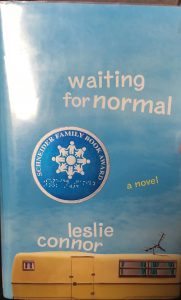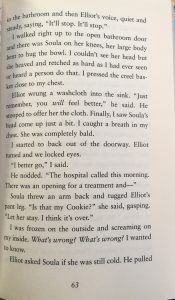Title: Waiting for Normal
Author(s): Leslie Connor
Illustrator/Photographer: N/A
Publisher and Year: Harper Collins, 2008
Number of Pages: 290
Tags: Award Book, Chapter Book, Emotion, Family, Fiction, 2-3, 4-5, Sarah Luce
Genre: Realistic Fiction
Descriptive Annotation:
A young teenage girl, Addison, and her mother move into a trailer in a rundown area outside of the city after Mommers, Addison’s mother, divorces Addison’s stepfather. The story follows Addison for about a year as she navigates a new place, new school, and changes in her family dynamic. The story touches on things such as perceived mental illnesses, physical illness like cancer, and learning disabilities, giving students a glimpse into what life is like for people who deal with those things. It also has characters that are deep and are not featured much in literature, like families dealing with divorce and separation, as well as characters that are a part of the LGBTQ+ community. Students reading this book may encounter bigger words they do not know (as the main character keeps a vocab notebook) but the words are often defined and explained as a part of the plot.
Classroom Application:
This book would be more useful in teaching life lessons to students, rather than academic lessons. It could teach inclusion of others, through looking at the inclusion of a character that is gay or the way Addison is accommodated and included in her Stage Orchestra class, given her dyslexia. It could also be used to discuss more deep things, such as the affect of cancer on a person, the pain of grief, or the impact of a family being split apart.
Linguistic and Cultural Diversity Analysis:
This story represents the culture of being poor in a rundown town in America. It gives the reader a look at what it is like to live check to check from Addison’s perspective, like when she says to her hamster, “‘Well, Pic, given the size of me and the size of you, if food is wealth, you’re the queen today’” (page 238). It also shows one perspective of what it is like to live with a person who potentially has a mental illness. I would have this as a book in my classroom library and explain it to students as a book that talks about real-world experiences that many people face in their lives, like cancer. Soula, one of Addison’s friends from the corner minimarket, tells her, “‘You’re seeing the worst of it, Cookie…This is cancer. And it stinks’” (page 65). This book was written relatively recently (2008) so it is more intentional about discussing big topics in today’s society, such as mental illness and inclusion.
Illustrations:


